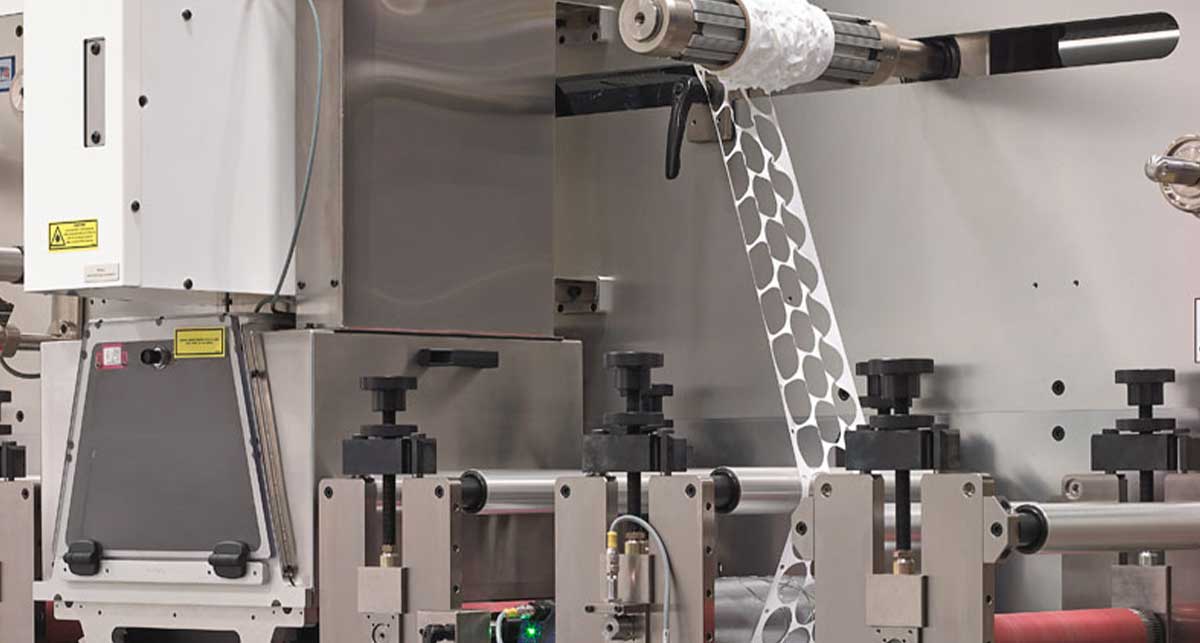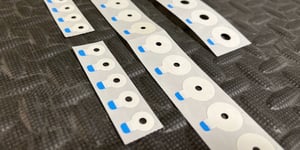You’re working on a project, and the question springs up, “What material should we use?” Suddenly, you start considering every material you know.
After shuffling to your computer and setting in, you begin pouring through the endless expanse of the internet, hoping to find the one that spoke to you.
And then high density polyethylene (HDPE) is there.
Maybe this could work, You think. Except, I don’t remember much about it.
Strouse has worked on over 50 long-term HDPE projects, and with our experience processing plastics, we have the answers that’ll allow you to ditch the frustration.
When you’ve got a project idea, but you’re having trouble deciding which plastic works, save your precious time by using an experienced converter.
You’ll learn the basics of HDPE, and by the end of this article, you should be able to explain the properties of HDPE confidently and navigate to potential suppliers.
What is HDPE?
High density polyethylene (HDPE) is a dense and durable plastic that cuts easily and can be welded into various forms.
HDPE is unique from many other plastics due to its chemical, high-impact resistance, and joint integrity. It’s more durable than its counterpart, low density polyethylene (LDPE), and it has a relatively high melting point.
While HDPE is a non-biodegradable material, it can still be reshaped and recycled very well. HDPE can go through many uses before it’s considered unusable.
If you live in the States, you may have heard HDPE referred to as “milk jug plastic.”
Many plastics degrade when faced with water or left out in the heat, but HDPE is entirely non-toxic and the perfect choice for storing food or beverages. HDPE is often used to build chemical storage containers due to its ability to withstand strong acids, bases, and alcohol.
HDPE is also resistant to molding and mildew that often damage car interiors, making it ideal for many automotive applications, like interior linings, seats, storage, or fuel tanks.
WHEN SHOULD I USE HDPE?
HDPE isn’t for every project.
Compared to other materials, HDPE film can be expensive enough that it’s really only worth using when its thickness and moldable nature align with its purpose.
It becomes malleable when heated, which is helpful for flexible jobs but doesn’t always lend itself to high-heat applications.
Times you should NOT use HDPE:
-
High heat applications
-
Flame exposure
-
Extremely humid environments
-
Around oxidizing acids/chlorinated hydrocarbons
If heated past a certain point, HDPE undergoes thermal expansion, which poorly affects the parts with tight tolerances. Due to its petroleum base, it also becomes flammable in certain forms.
Blazing hot and humid environments can give HDPE containers stress cracks, yet HDPE withstands more extreme temperatures than polyethylene terephthalate (PET).
In addition, you should reconsider using HDPE if you’re planning on handling oxidizing acids or chlorinated hydrocarbons because it’s resistant to neither.
HDPE is a versatile material that can be treated against splintering or bacteria retention. It often holds valuable properties in a clinical setting, like translucency and puncture resistance.
Times you SHOULD use HDPE:
-
Sterile environments
-
Smooth parts
-
Lightweight projects
-
For projects needing a high strength-to-density ratio
As a highly specialized plastic, it’s difficult to provide concrete examples of when to use HDPE. Specific jobs require stiff yet lightweight materials, and HDPE often falls in the sweet spot between a strong and dense yet lightweight material.
You can also process HDPE as a smooth sheet that doesn’t pick up contaminants and can be boiled for sterilization, making it ideal for hospital use.
The overall advantages and disadvantages of HDPE uniquely affect the part you’re building, so if you have any questions about it, talk to your converter so they can point you in the right direction.
Where can I find HDPE?
Your choice of supplier will partially depend on the shape and size of your ideal HDPE.
HDPE comes in several forms: flat sheets, rolls of film, rods, and pellets. Converters can use flat sheets or rolls to cut out individual 2D parts, whereas manufacturers can melt rods and pellets into your desired shape.
Here are our top 3 most used HDPE film suppliers:
Griff Paper and Film– Griff Paper and Film feature HDPE, LDPE, and MDPE (Medium Density Polyethylene) for your exact strength to flexibility needs. If you need polyethylene of varying flexibility, this is where you can find it.
New Process Fibre Company– New Process Fibre Company sells different lengths of HDPE sheets OR rolls in a broad assortment of colors. If you’re interested in material customizability, they’ll provide several choices.
Blue Ridge Sign Supply– Blue Ridge Sign Supply offers HDPE sheets of varied sizes and textures. They could be an excellent asset if you’re looking for a certain number of sheets.
However, before you rush off to grab HDPE, it’s worth noting your choice of suppliers isn’t limited to this list. Strouse is based in Maryland, and if none of these suppliers are convenient, there will always be other options.
When it comes to converting custom parts, the best supplier is the one who can deliver trustworthy materials at a reasonable price. Our primary focus is converting, which is why we work with a wide range of suppliers to seek the best deals.
Are you planning to use your HDPE in an adhesive solution? If you ask for a quote, we’ll be happy to help you find a reliable supplier that suits your needs.
HOW DO I PROCESS MY HDPE
So, you’ve blossomed from an HDPE newbie into somebody ready to make an informed decision. Where do you go from here?
Using what you now know about HDPE, you’re probably starting to understand whether it’s a good match for you. However, choosing the material is only half the battle. HDPE alone won’t help unless you’ve got a way to convert it.
A converter will take your chosen material and shape it into your finished part. You’ll want to select a converting partner you can trust, and we can help guide you through that journey.
So, you may be thinking, how do I choose an adhesive converter?
The easiest way to start is simply by monitoring the questions converters should ask you as you discuss your part and the material or tolerances you need. Are they interested in where or how you’ll use it? Do they suggest using high quality materials or simplifying the design?
Our ultimate goal is to produce a piece in the most straightforward manner, which is why you’ll hear us asking for any context you can provide.
If you’ve got any questions of your own, reach out to us or go ahead and request a quote and we’ll get back to you as soon as we can.






